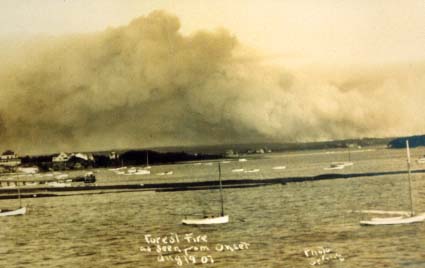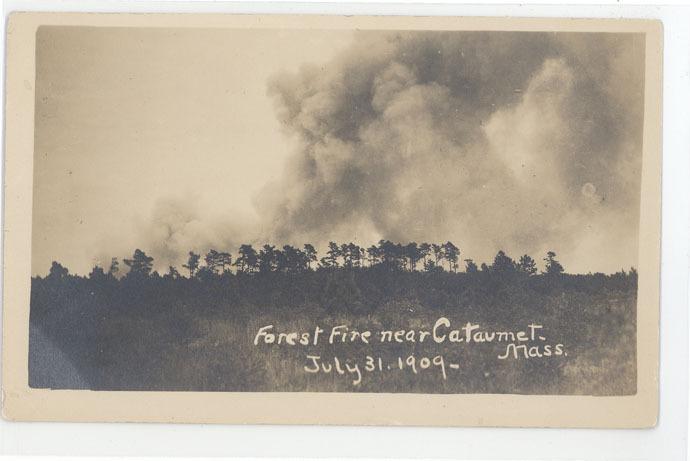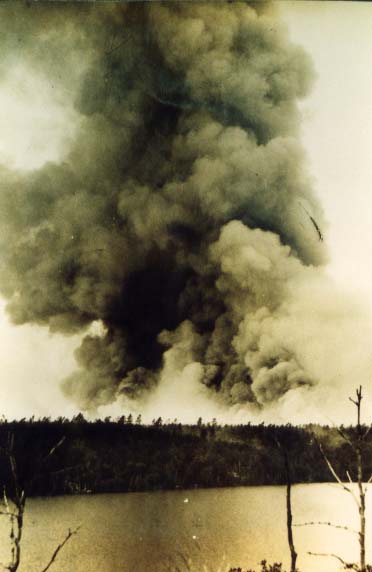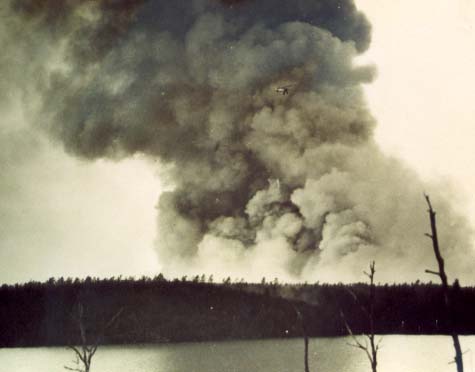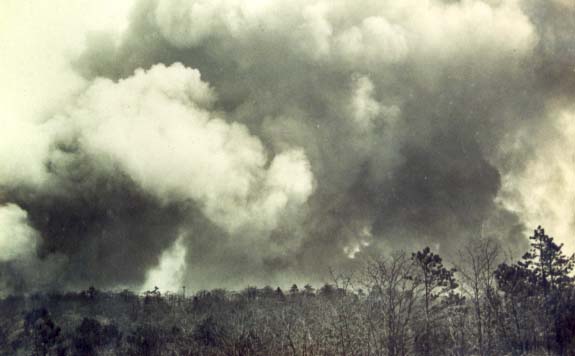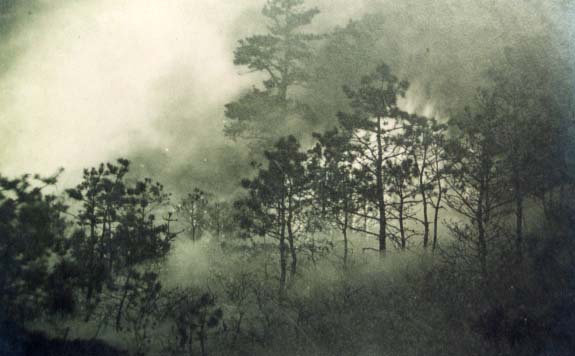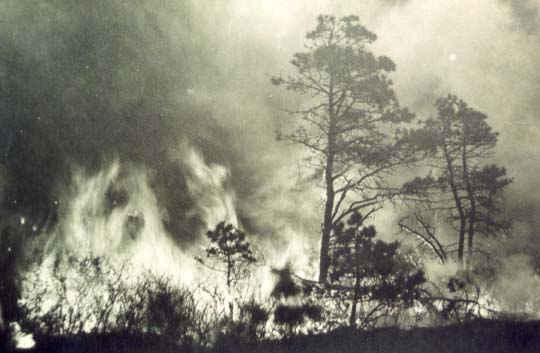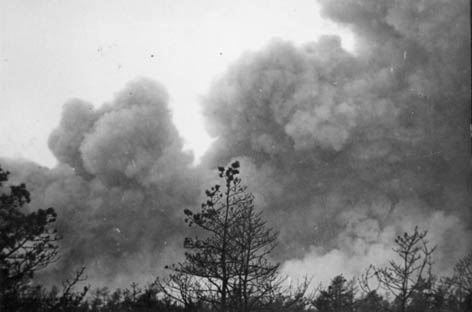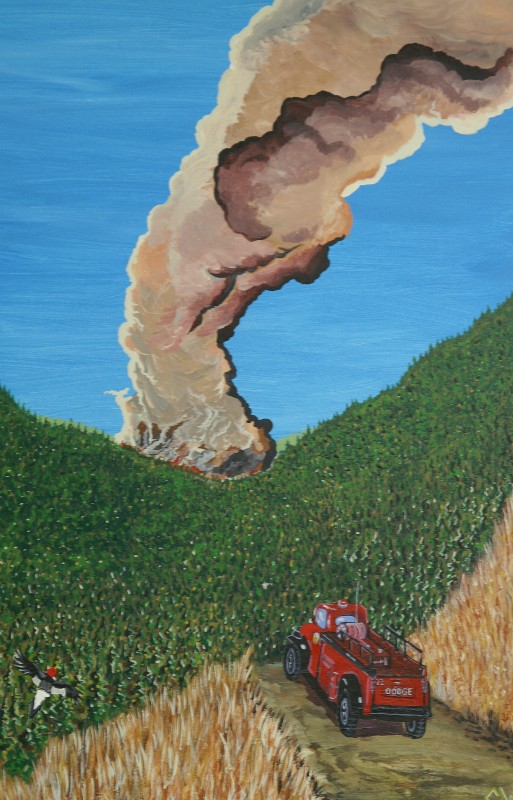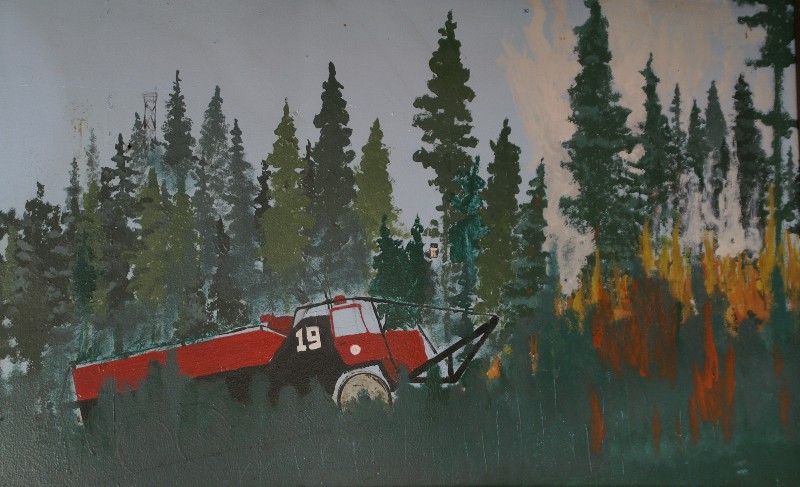|
1780 - THE DARK DAY
In 1780, an early morning lightning storm started a fire in the woods. Clouds of
dark smoke filled the sky to the west of Sandwich in what was called
"The Dark Day." It had been for generations, the practice to "fire the
woods"
each year as the Indians had done, usually in April, to burn off the grass and
seedlings. This practice kept wide stretches of the forest clear of
underbrush
but did not damage the large standing trees.
1887 - 25,000 ACRES
In 1887, a huge forest fire burned over 25,000 acres from the Pocasset
section of Bourne to Sandwich. This fire destroyed approximately 600
cord of stacked wood at the Sandwich Glass Company as well as several
stands of oak and pine ready for cutting. The Glass company was forced
to then purchase and burn coal in its furnaces at a substantial financial
cost. This, along with a labor union strike, ultimately contributed to the
demise of the Sandwich Glass Company, one of the Cape's largest industrial businesses between 1825 and 1894.
1923 - 25,000 ACRES
On May 30,1923 a fire began in the woods in Pocasset village. By the end of the
day, it
was thought that the fire was out. By morning however, it picked up again,
burning through
the day. Once again, it was believed that it was under control by
nightfall, only to flare up again
and again for 7 days. An area of approximately 25,000 acres, between Pocasset
village,
Sagamore, Sandwich, East Sandwich, and South Sandwich was left blackened.
1923 - STATE FOREST CREATED
The State Commissioner of Conservation stated that "something was radically
wrong" adding that
the fire could have been contained to about 1,000 acres if it had been properly
handled since
it was not even a "fire day." Following this fire, the state purchased
hundreds of acres of
burned over forest in Bourne and Sandwich and created the Shawme State Forest in
1923.
The name was changed in 1938 to the Shawme-Crowell State Forest, honoring
Lincoln
Crowell for his long dedication to the Cape's forests. Crowell was killed
in 1938 when the
patrol truck he was in was struck by a train in Brewster.
1928 - CAPE COD FOREST FIRE PREVENTION
"A concerted national fire prevention program (dealing with wildland fires) did
not follow,
until two experiments in 1928.... The Cape Cod Forest Fire Prevention experiment
and the
Southern Forests Education campaign... The Cape Cod program involved 110,000
acres
of scrub oak and pitch pine. The experiment was intended to compare the
costs of
prevention and pre-suppression with those of suppression...." This
statement in "Fire
in America" by Stephen J. Pyne c.1982, demonstrates how serious the forest fire
situation on the Cape was at that time. The Smokey the Bear program grew
out of these
early fire prevention efforts.
APRIL 27, 1938 - 3 FIREFIGHTERS KILLED
Forest fires can be extremely dangerous, especially when fought by hand.
One of the worst
fires ever on Cape Cod struck on April 27, 1938. A number of fires were
burning on the
Cape and in Plymouth County, when another fire began in Sandwich Bourne
Deputy
Chief Gibbs took a crew of young men, volunteers, with him in to fight the fire
west of
what is now Route 130 in Sandwich. 40 mile per hour winds fanned the
flames and the
men were soon trapped by the fire. All received serious burns. Three
men, Thomas
Adams, age 43; Gordon King, age 34, and Ervin Draber, age 28 died that day
fighting
this forest fire. A memorial stands today near the site where they died.
|
